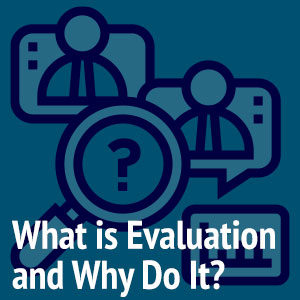 One of the most important questions to consider before starting an evaluation is, “How will evaluation findings be used?” There are a number of ways the findings from an evaluation can be used. These include:
One of the most important questions to consider before starting an evaluation is, “How will evaluation findings be used?” There are a number of ways the findings from an evaluation can be used. These include:
- to improve the program (formative evaluation)
- to make judgements about the ultimate value/benefits of the program to participants and stakeholders (summative evaluation)
- to sustain and/or expand the program
- to document and publicize the program’s achievements (outreach and marketing)
- to curtail the program
By being clear about the intended uses of evaluation findings, organizations can choose the most effective and stakeholder-relevant evaluation design. If, for example, a program funder wants to know whether their investment yielded desired outcomes for program participants, it may not be useful to focus the evaluation on gathering data that primarily indicate ways to improve the program’s delivery. On the other hand, if an organization is curious about how its programming is being implemented, and if such implementation is in fidelity with a research-based program design, the evaluation will want to focus more on implementation processes, rather than ultimate program outcomes.
Needless to say, stipulating the use of evaluation findings is closely related to the question of who are the major audiences for the evaluation. See our previous post, Identifying Evaluation Stakeholders. By clarifying potential audiences for findings, organizations and evaluators can identify the most useful evaluation strategy and design. In the next blog post we will discuss a related question, i.e., “What information will stakeholders find useful and valuable?” And to learn more about our data collection and evaluation click here.
Resources:



